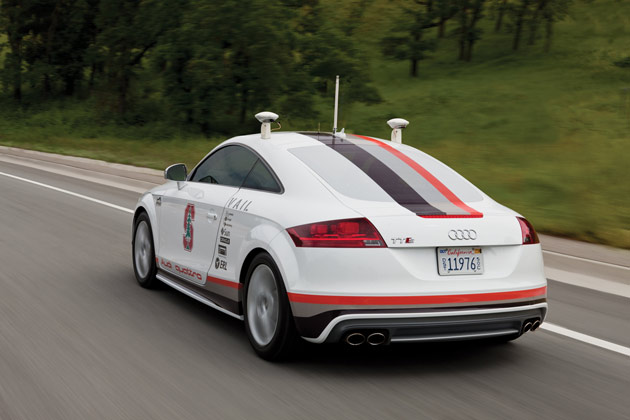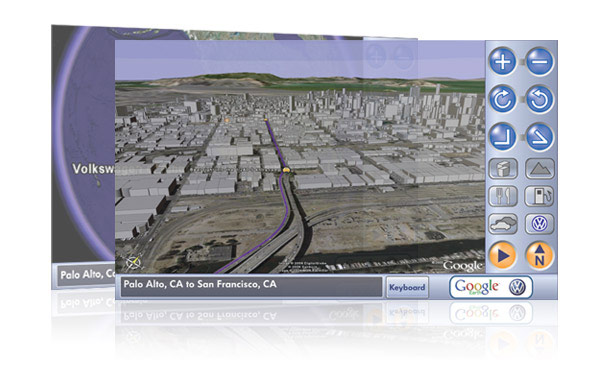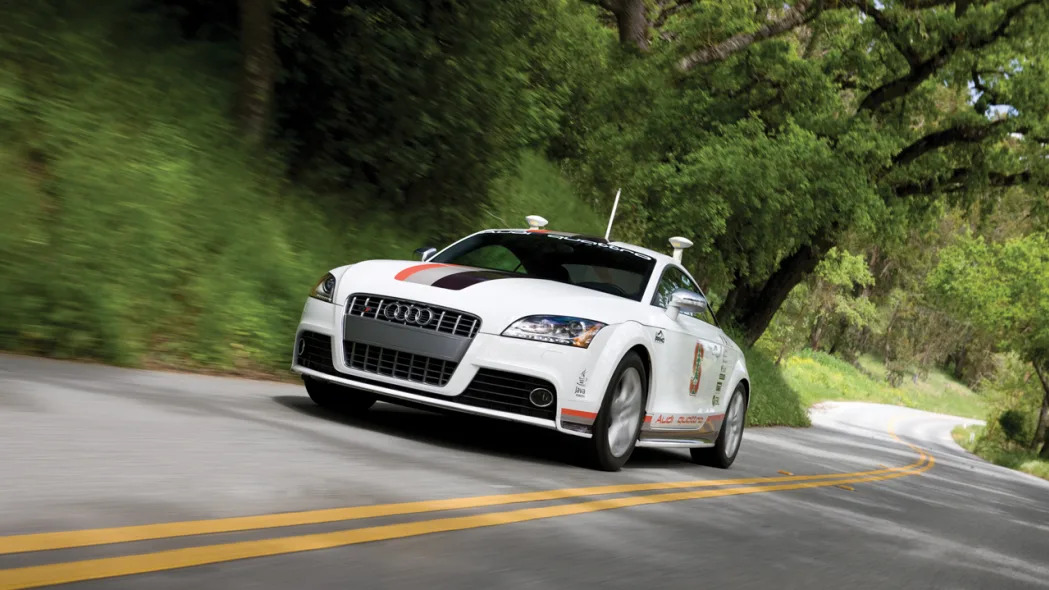Autoline on Autoblog with John McElroy
Nestled on the fringe of Stanford University's campus in Palo Alto, California is one of the coolest toy stores in the automotive industry. Officially it's called Volkswagen's Electronics Research Lab, and inside they're working on some of the most innovative technology that we'll soon see in cars.
Volkswagen is using the ERL to develop electric cars, autonomous cars, online navigation, new human-machine interfaces and other electronics related technology. The reason the lab is in Silicon Valley is that VW wanted to tap into the "let's-just-get-it-done" entrepreneurial spirit for which the region is famous. And it's attracted some pretty interesting talent to work there.
For example, Martin Eberhard, the guy who created Tesla and who later had a major fallout with Elon Musk (who now owns Tesla), is now working on electric cars for VW. And yes, he's still working with laptop-type batteries, which are officially known as the 18650. Eberhard claims he's going to be able to come out with an electric version of the Golf with a 200-mile driving range, and an Audi e-tron with a 300-mile range.
Continue reading...
John McElroy is host of the TV program "Autoline Detroit" and daily web video "Autoline Daily". Every week he brings his unique insights as a Detroit insider to Autoblog readers.
Eberhard is a big fan of the 18650. He points out that more than two billion of them are manufactured every year, far in excess of any of the purpose-built batteries for electric cars. He says they have more energy density, are more reliable, and can be packed more easily to fit inside a car. Other automakers may take issue with Eberhard's claims, but it's interesting to note that Toyota (via Tesla) is now dabbling with the 18650, too.
Even more exciting than VW's work with EVs is the research that it's doing with autonomous cars, that is, driverless cars. After taking second place in DARPA's Urban Challenge in 2007, the Stanford-VW team came up with the idea of racing an Audi TT up Pike's Peak this year. Audi has kept the results of this effort hush-hush, but is going to make a public announcement any day now. Interestingly, the cost of the electronics in the DARPA car was around $250,000. But for the Pike's Peak run the cost was slashed to somewhere between $25,000 and $50,000. That's a rate of improvement that smashes through Moore's Law!

Nestled on the fringe of Stanford University's campus in Palo Alto, California is one of the coolest toy stores in the automotive industry. Officially it's called Volkswagen's Electronics Research Lab, and inside they're working on some of the most innovative technology that we'll soon see in cars.
Volkswagen is using the ERL to develop electric cars, autonomous cars, online navigation, new human-machine interfaces and other electronics related technology. The reason the lab is in Silicon Valley is that VW wanted to tap into the "let's-just-get-it-done" entrepreneurial spirit for which the region is famous. And it's attracted some pretty interesting talent to work there.
For example, Martin Eberhard, the guy who created Tesla and who later had a major fallout with Elon Musk (who now owns Tesla), is now working on electric cars for VW. And yes, he's still working with laptop-type batteries, which are officially known as the 18650. Eberhard claims he's going to be able to come out with an electric version of the Golf with a 200-mile driving range, and an Audi e-tron with a 300-mile range.
Continue reading...
John McElroy is host of the TV program "Autoline Detroit" and daily web video "Autoline Daily". Every week he brings his unique insights as a Detroit insider to Autoblog readers.
Eberhard is a big fan of the 18650. He points out that more than two billion of them are manufactured every year, far in excess of any of the purpose-built batteries for electric cars. He says they have more energy density, are more reliable, and can be packed more easily to fit inside a car. Other automakers may take issue with Eberhard's claims, but it's interesting to note that Toyota (via Tesla) is now dabbling with the 18650, too.
Even more exciting than VW's work with EVs is the research that it's doing with autonomous cars, that is, driverless cars. After taking second place in DARPA's Urban Challenge in 2007, the Stanford-VW team came up with the idea of racing an Audi TT up Pike's Peak this year. Audi has kept the results of this effort hush-hush, but is going to make a public announcement any day now. Interestingly, the cost of the electronics in the DARPA car was around $250,000. But for the Pike's Peak run the cost was slashed to somewhere between $25,000 and $50,000. That's a rate of improvement that smashes through Moore's Law!

In the short term, VW is looking at using autonomous technology for a self-parking application. Lincoln and Lexus already have a parking feature that will automatically back up a car into a parking space. But Volkswagen wants to go beyond that. It's developing a system where a driver can get out of a car, leave it running, and then use his phone to command it to go into a parking lot or garage to find an open spot on its own. Then, when the driver wants to retrieve his car, he can call it on his phone and have it meet him at the entrance again. VW says it can build this system using automotive grade sensors. Now they have to miniaturize the system and make it affordable, but in demonstrations they showed me, it sure worked well.
The ERL is also doing pioneering work developing an online navigation system. Rather than rely on DVDs to provide maps and navigational information, the system uses a 3G connection to the Internet to do map searches on Google. By eliminating the need for a DVD player, this system could drastically cut the cost of putting a nav system in a car. Not only can it give you map directions, it can also display it with a satellite view, making it a lot easier to see where you're going. It even allows you to search for directions simply by dropping photos with GPS data on them into your nav system. And when you're not using the navi, you can use you use the system to search the internet for other information.

VW is also developing ways to display information on the dashboard of a car that is far more intuitive than today's systems. In this case, the surface of the instrument panel is segmented, with different contours and shapes molded into it. A driver can easily feel where to put his hands on the dashboard to activate a system without having to look down at it. And the instrument panel itself doubles as a touch-sensitive display screen. This way, information can be displayed over a greater area rather than just in the instrument cluster or center stack. Bye-bye i-Drive.
The Electronics Research Lab is just one of several research facilities that Volkswagen has around the world. But I'll bet that it's the most fun one to work at. After all, where else would you be able to work on technology that could change the automobile as we know it?
###
Autoline Detroit
Airs every Sunday at 10:30AM on Detroit Public Television.
Autoline Detroit Podcast
Click here to subscribe in iTunes
Follow Autoline on Twitter for ongoing updates every day!
Autoline Daily
The video meant to be presented here is no longer available. Sorry for the inconvenience.
Subscribe |



Sign in to post
Please sign in to leave a comment.
Continue